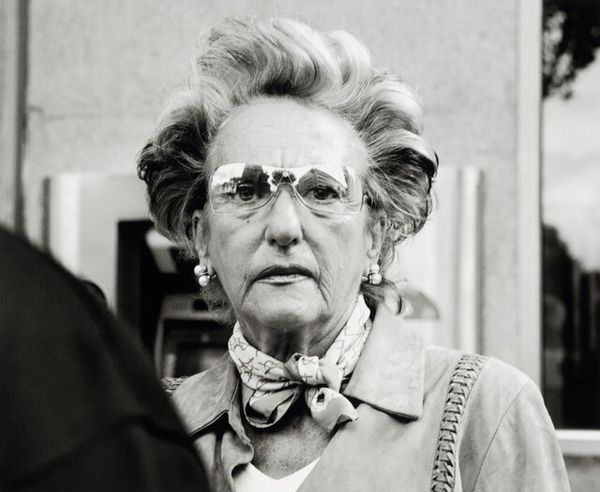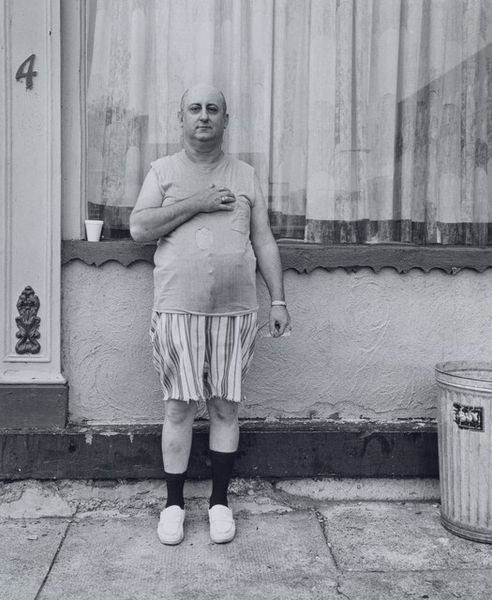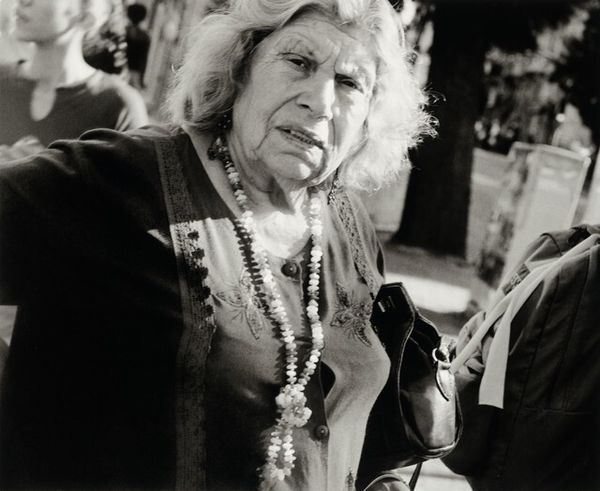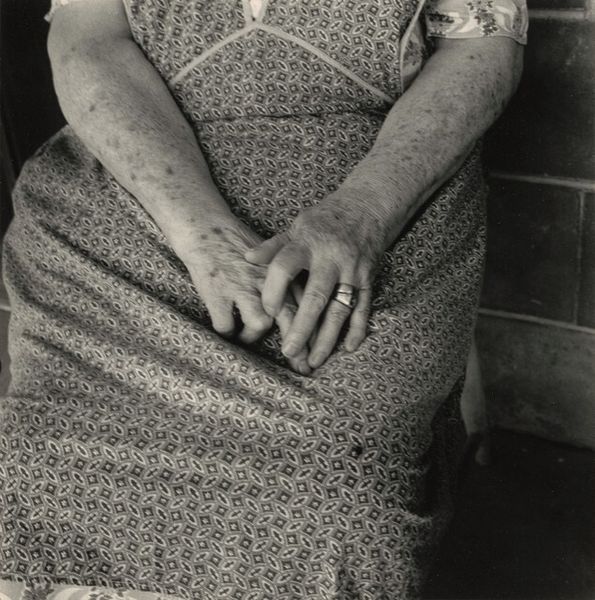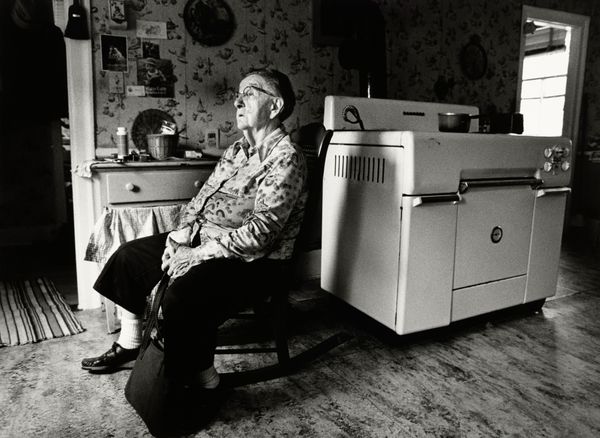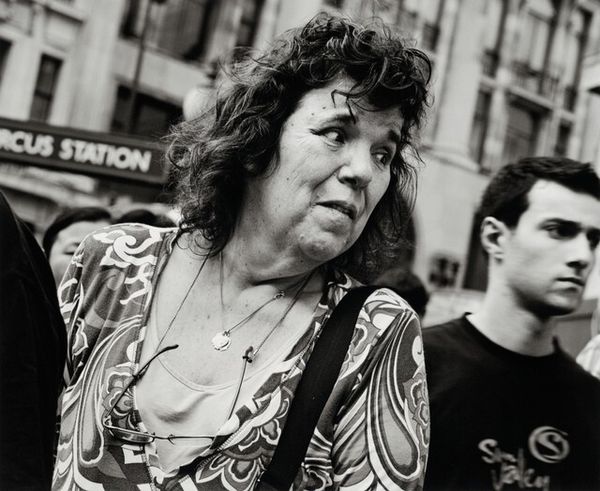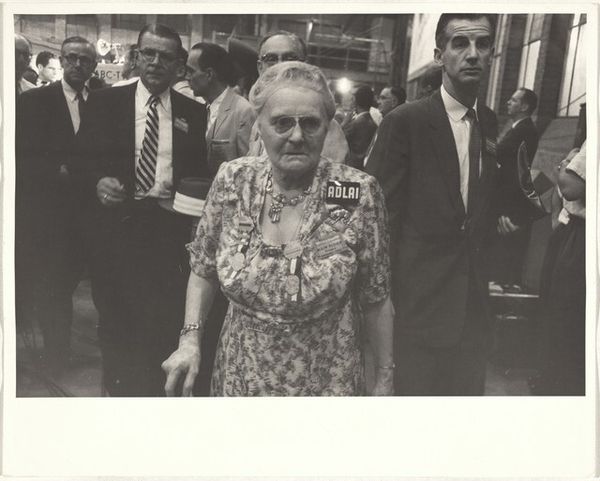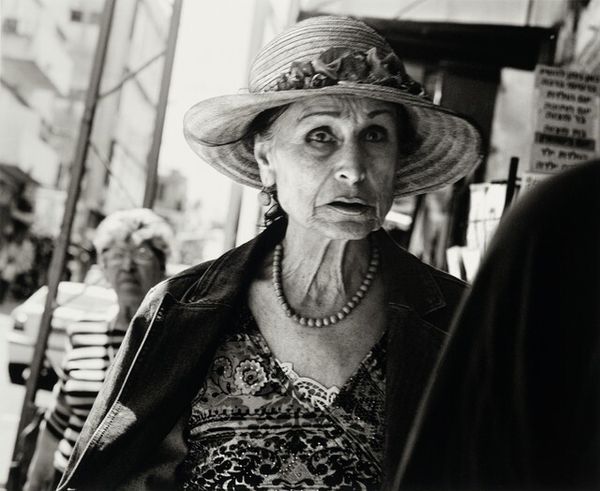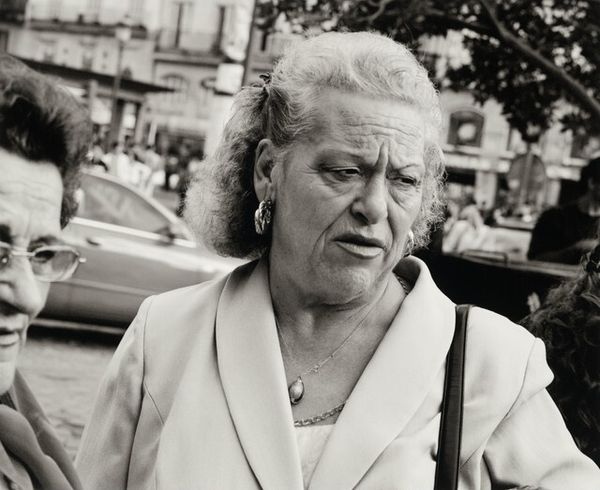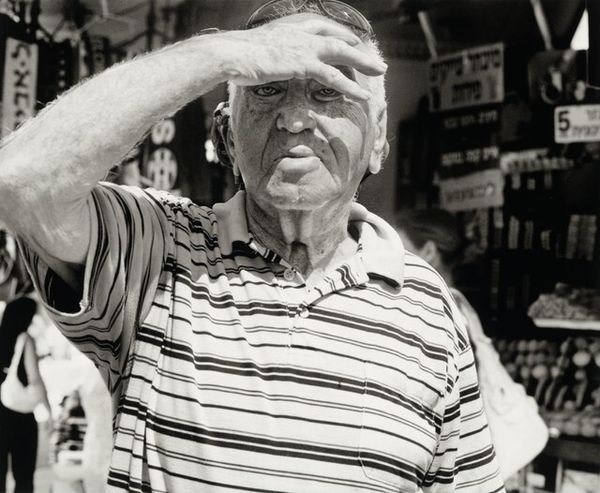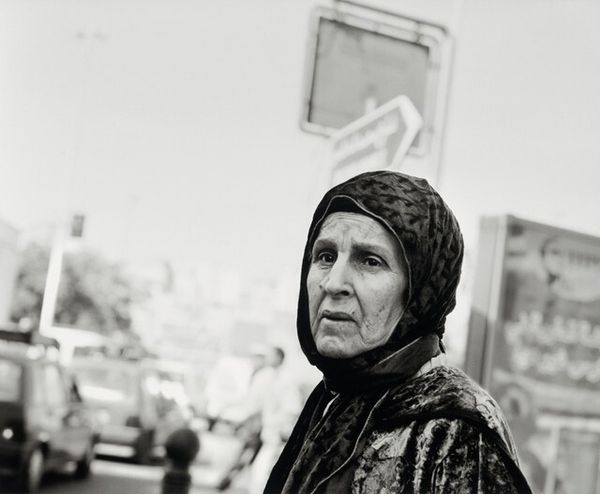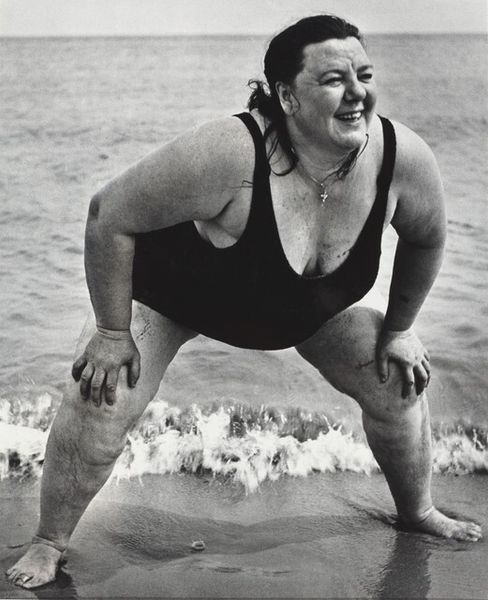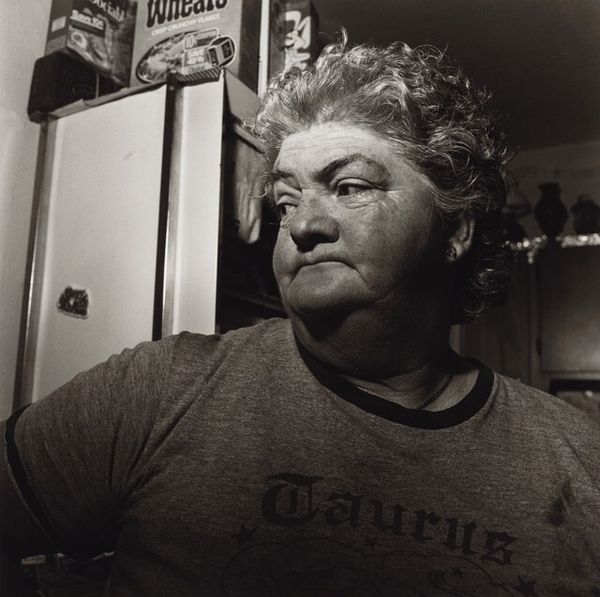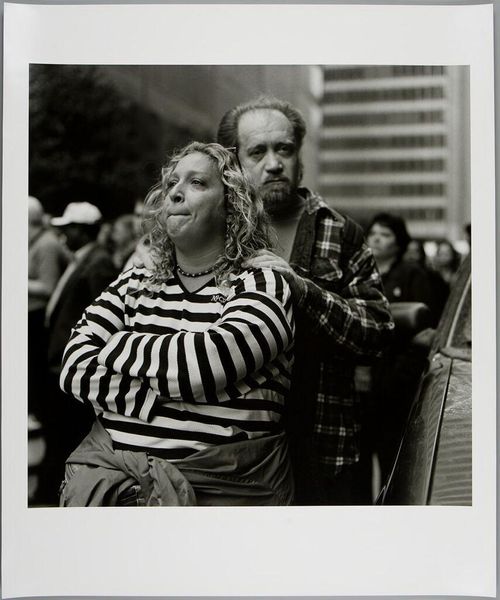
Tel Aviv, 2007, at Allenby and Sheinkin Streets Possibly 2007 - 2014
0:00
0:00
photography, gelatin-silver-print
#
portrait
#
black and white photography
#
street-photography
#
photography
#
historical photography
#
black and white
#
gelatin-silver-print
#
monochrome photography
#
monochrome
#
monochrome
Dimensions: image: 40.64 × 49.53 cm (16 × 19 1/2 in.) sheet: 58.42 × 67.31 cm (23 × 26 1/2 in.)
Copyright: National Gallery of Art: CC0 1.0
Curator: The stark gaze of the woman in Leo Rubinfien’s "Tel Aviv, 2007, at Allenby and Sheinkin Streets" compels us to examine not just the individual, but the societal narratives she embodies. Editor: This black and white photograph, likely a gelatin silver print, captures an older woman on a street in Tel Aviv. There's a real sense of immediacy in the image; I’m curious about what layers of meaning you find here? Curator: This work presents an opportunity to explore the concept of visibility – who is seen, and how? Consider the historical context: Israel's complex social landscape and the layered identities of its citizens. Does this photograph, for you, reflect the ongoing negotiations of identity, gender, and aging within that context? Editor: I hadn't thought about visibility in that way, but now I notice how the woman’s clothing contrasts sharply with the monochrome background, drawing your eye to her. It definitely seems intentional, perhaps highlighting her presence, but also potentially marking her as "other." Curator: Exactly. And think about street photography itself – the act of capturing someone unaware, often without their explicit consent. Whose story is being told, and who controls the narrative? Rubinfien’s work urges us to question our own gaze. Does it invite empathy or perpetuate existing power structures? Editor: I think it pushes for empathy. There's a vulnerability in her expression, magnified by the starkness of the black and white. It definitely makes me question my own role as a viewer and what I bring to the interpretation. Curator: That critical awareness is key. Art can be a mirror, reflecting back at us our own biases and assumptions. And by acknowledging those, we can begin to have more meaningful dialogues about identity, representation, and social justice. Editor: I see that now. Thanks for sharing that perspective. Curator: Thank you for engaging with such insightful questions!
Comments
No comments
Be the first to comment and join the conversation on the ultimate creative platform.
